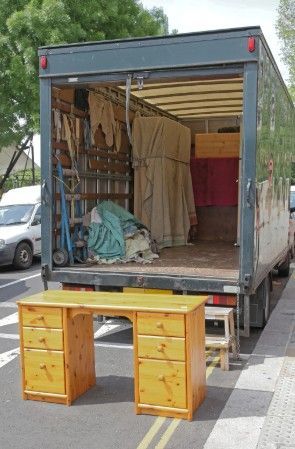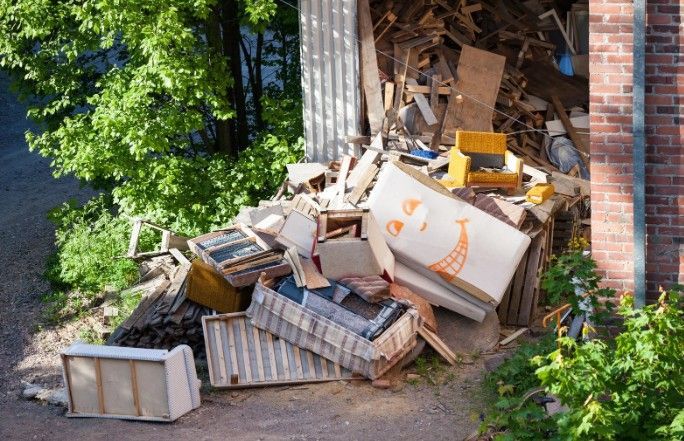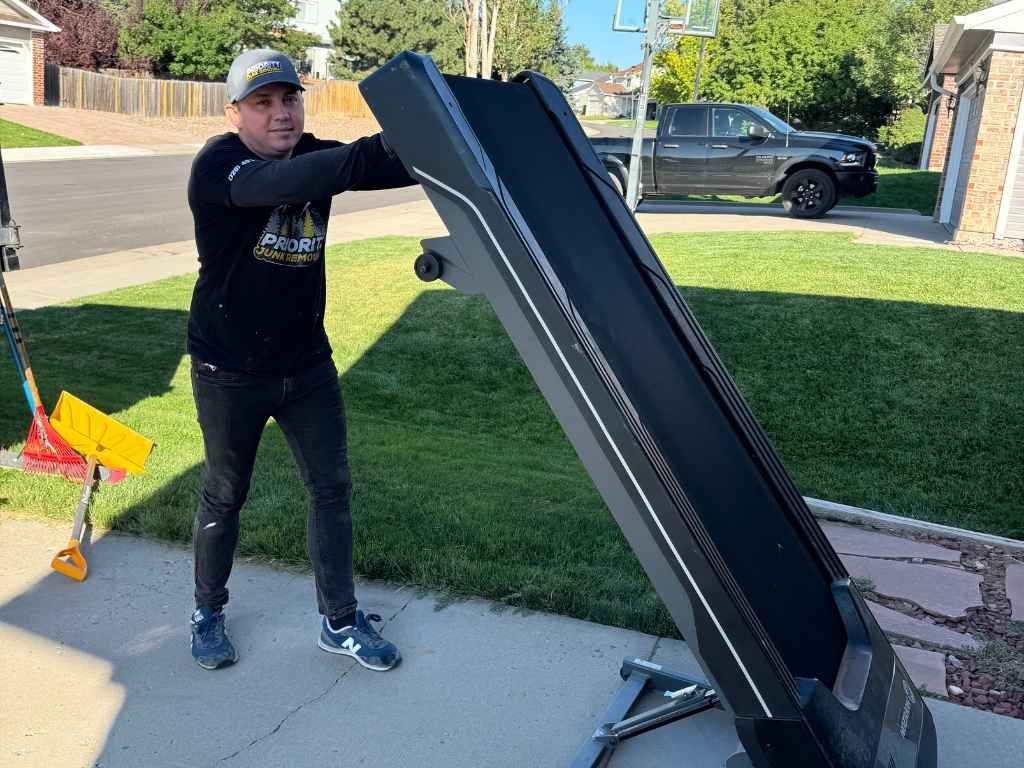How to Reduce Stress During a Furniture Removal
Furniture removal can feel overwhelming — heavy pieces, tight doorways, and the constant fear of damaging something along the way. But it doesn’t have to be a chaotic mess. With a bit of planning and a clear strategy, you can make the process smoother and far less stressful. Whether you’re moving to a new home or just clearing out old pieces, the key lies in organization, preparation, and knowing when to ask for help.
Plan Ahead and Stay Organized
Rushing through furniture removal is a recipe for stress and disaster. Start by creating a detailed plan at least a week before the removal date. List every piece of furniture you need to move, measure doorways and hallways, and identify potential problem spots like tight corners or narrow staircases. A floor plan of your new space can help you determine where each piece will go, reducing confusion on moving day.
Gather all the necessary supplies in advance — moving blankets, straps, dollies, and protective covers. If you’re working with a moving company, confirm the date and time well ahead of schedule to avoid last-minute changes. The more organized you are, the less room there is for unexpected chaos.
Declutter Before You Start
Furniture removal is the perfect opportunity to reassess what you truly need and create a more intentional living space. That old armchair gathering dust in the corner? The wobbly coffee table that’s seen better days? Now’s the time to let them go. Start by going room by room and making three distinct piles: keep, donate, and discard. Be honest with yourself — if you haven’t used a piece of furniture in over a year, chances are you won’t miss it.
It’s easy to get sentimental about furniture, but focusing on the benefits of decluttering — more space, less chaos, and a cleaner environment — can make the process easier. Plus, fewer items to move means a faster and smoother removal. Donating pieces that are still in good condition can help others in need, and recycling broken items ensures you’re minimizing waste. A streamlined, clutter-free space sets the foundation for a more peaceful and organized home.
Break Down Larger Pieces

Large furniture pieces like bed frames, tables, and bookshelves are much easier to handle when disassembled. Trying to carry a fully assembled bed frame down a narrow hallway is a recipe for disaster — and a few banged-up walls. Instead, take the time to remove legs from tables, headboards from beds, and shelves from bookcases. Keep screws, bolts, and small parts in labeled plastic bags so they don’t get lost in the chaos of the move.
Taking apart furniture makes it lighter and easier to maneuver through tight spaces, reducing the chances of damage to both your furniture and your walls. If a piece seems too complex to disassemble, check the manufacturer’s instructions or look up a tutorial online. Breaking down large pieces may take extra time upfront, but it will save you headaches (and possibly repair costs) once it’s time to reassemble everything in your new space.
Protect Your Furniture and Home
Scratches, dents, and scuffs are common hazards during furniture removal, but a little preparation can prevent most of them. Start by wrapping delicate pieces in moving blankets and securing them with plastic wrap or furniture straps. Glass surfaces should be covered with bubble wrap and clearly labeled as “fragile” so movers handle them with extra care. Don’t forget about your floors and walls — corner protectors and padded mats can prevent damage from furniture legs and sharp corners.
For larger items like couches and dressers, consider using furniture sliders to avoid dragging them across hardwood floors or carpeting. Protective padding around door frames and stair railings can also save you from accidental scrapes and dings. Taking these precautions not only protects your furniture and home but also reduces the risk of costly repairs after the move. A little extra care now means less stress later.
Use Proper Lifting Techniques
Lifting heavy furniture the wrong way can lead to back injuries, muscle strains, and serious pain — none of which you want to deal with during a move. The key is to lift smart, not hard. Bend at the knees, not the waist, and lift with your legs rather than your back. Keep the load close to your body and avoid twisting while lifting. If a piece feels too heavy, don’t try to tough it out — ask for help or use a dolly. When navigating stairs or tight corners, communication is key.
One person should guide from the bottom while another steadies from the top. If you need to pivot, call it out so everyone stays on the same page. Investing in a back brace or weightlifting belt can also help protect your back during heavy lifting. Remember, there’s no shame in taking your time and prioritizing safety over speed.
Label Everything Clearly
When your furniture reaches your new space, knowing where everything goes can save you from a chaotic and stressful unpacking process. Use sticky notes or masking tape to label each piece of furniture with its intended room. If you’ve disassembled furniture, label each piece and store screws and bolts in a separate bag with a clear label. This will save you from the headache of trying to figure out which part belongs where during reassembly.
You can even color-code your labels to make things easier for movers — for example, blue for the living room, green for the kitchen, and red for the bedroom. Having a clear labeling system means you won’t have to answer a million questions about where things go, and it allows movers to work more efficiently. The more organized you are at this stage, the smoother the transition into your new space will be.
Get Professional Help When Needed
Sometimes, furniture removal is just too much to handle alone — and that’s perfectly fine. Professional junk removal or moving services can take the burden off your shoulders. Experienced movers know how to handle heavy pieces, navigate tricky spaces, and avoid damage. They also have the right tools and techniques to make the process quicker and safer. If you’re not sure how to dispose of unwanted furniture, a junk removal service can haul it away responsibly, ensuring that recyclable and reusable items don’t end up in a landfill.
Hiring professionals also reduces the physical toll on your body, saving you from sore muscles and potential injuries. The investment in professional help often pays for itself in time, convenience, and peace of mind. Sometimes, it’s worth handing over the reins to someone who’s done it a thousand times before.
Stay Calm and Take Breaks
Furniture removal is physically and emotionally draining, so don’t forget to give yourself some breathing room. It’s easy to get caught up in the urgency of moving, but rushing through the process only increases the chances of mistakes and injuries. Schedule regular breaks to hydrate, have a snack, and reset your energy. If you’re feeling overwhelmed, step away for a moment and regroup. Moving rarely goes perfectly, so expect a few hiccups along the way.
A broken chair leg or a lost screw isn’t the end of the world — most problems can be solved with a little creative thinking. Staying calm and maintaining a flexible mindset will help you handle challenges more effectively. Remember, you’re making progress, even if it’s not perfect. Taking it one step at a time will make the entire process feel more manageable.
Dispose of Furniture Responsibly
When it’s time to part with old furniture, be mindful of where it ends up. Donating pieces in good condition to local shelters or thrift stores gives them a second life and helps those in need. Many communities also offer furniture recycling programs, where materials like wood, metal, and fabric can be repurposed. For damaged furniture, check if any parts can be salvaged or reused before throwing them away. Upholstered items can sometimes be donated to animal shelters, where they’ll serve as cozy beds for pets.
If you’re not sure how to dispose of certain pieces, professional junk removal services often provide eco-friendly disposal options. Responsible disposal reduces landfill waste and ensures that your old furniture is handled with care. It’s a simple way to give back to the community and protect the environment.
Create a Comfortable Space After the Move
Once the furniture is in place, focus on making your new space feel like home. Start by arranging your furniture thoughtfully — think about traffic flow, comfort, and functionality. Add personal touches like throw pillows, blankets, artwork, and family photos to make the space feel inviting. Unpack in stages rather than trying to get everything done at once.
Prioritize essential areas like the bedroom and kitchen, and work through the rest at a comfortable pace. This gradual approach prevents burnout and allows you to adjust to your new surroundings naturally. Creating a comfortable environment helps you settle in emotionally and physically. A well-organized and cozy space will make you feel more grounded and at peace after the stress of moving.
Conclusion
Furniture removal doesn’t have to be a source of stress. With the right preparation, mindset, and help when needed, you can simplify the process and avoid common pitfalls. If you’re ready to make furniture removal easy and stress-free, Priority Junk Removal is here to help. Located at 6091 South Spotswood Street, Littleton, Colorado 80120, Priority Junk Removal offers reliable and professional services tailored to your needs. Give them a call at 720-451-1359 or email priorityjunkremoval@gmail.com to schedule your furniture removal today.











